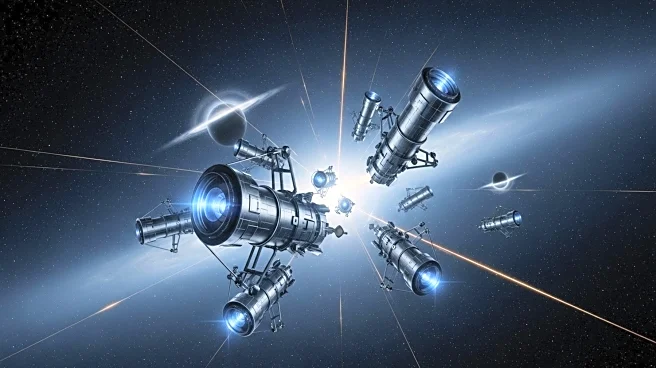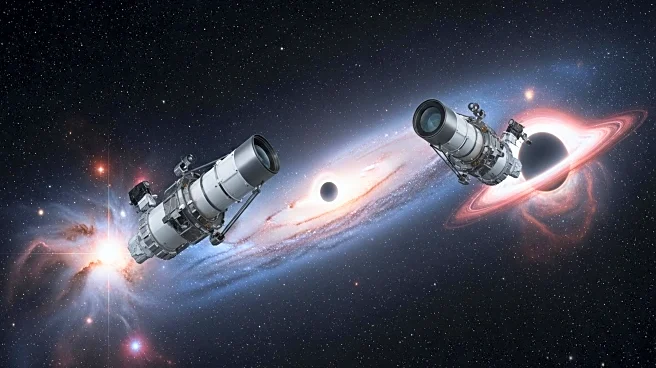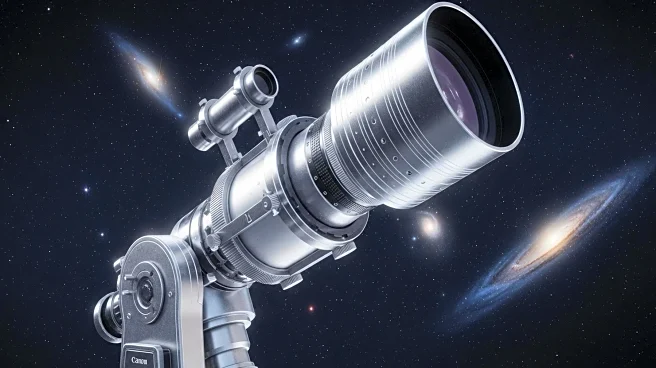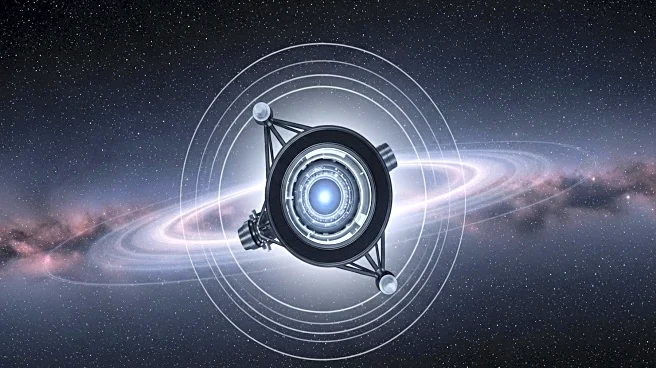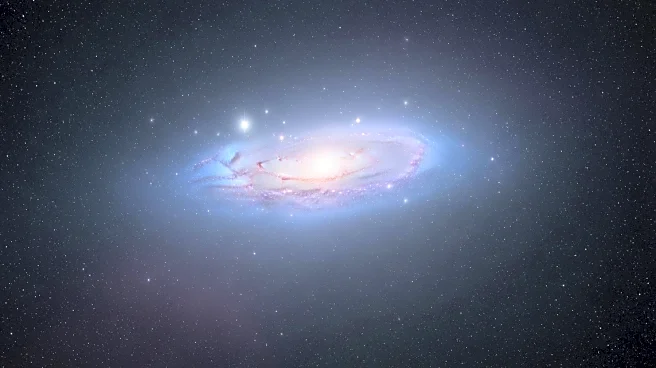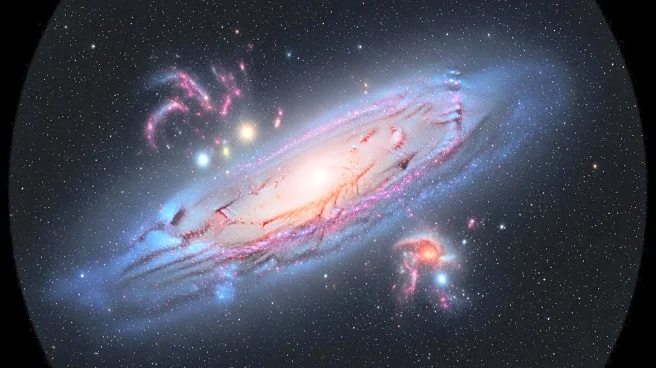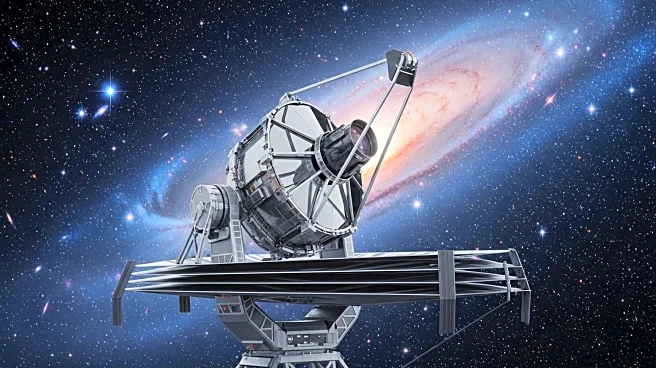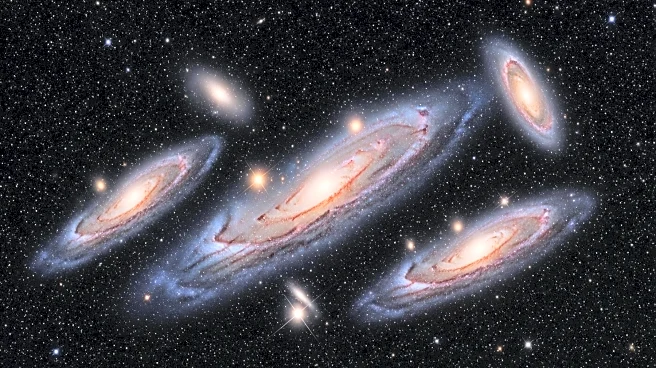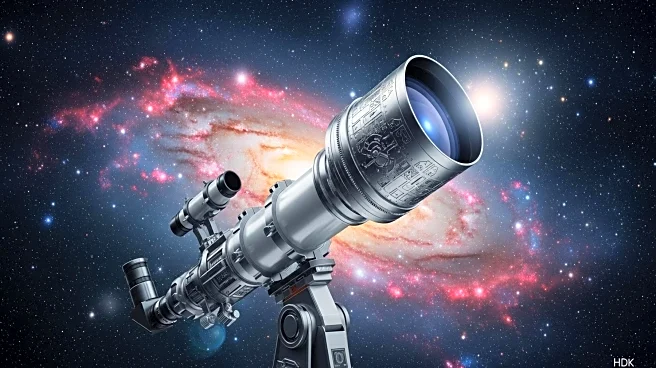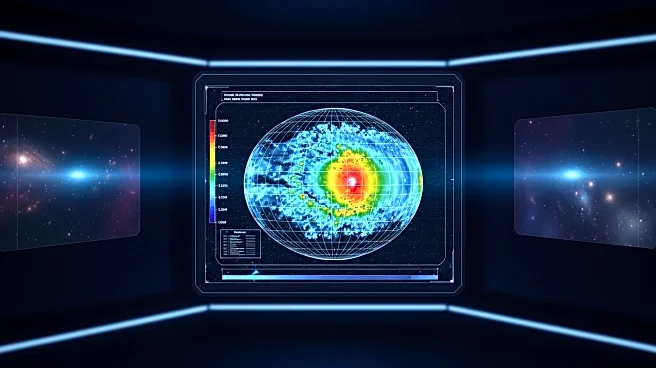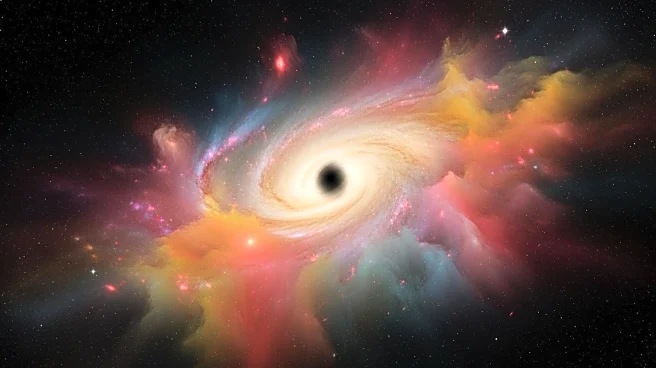What's Happening?
Recent research suggests that the James Webb Space Telescope (JWST), the Euclid telescope, and NASA's upcoming Nancy Grace Roman Space Telescope could form a powerful triad to search for supermassive black holes earlier in the universe's history than previously detected. These telescopes aim to identify black holes with masses millions or billions of times higher than the sun when the universe was less than 270 million years old. The JWST has already detected supermassive black holes existing when the universe was under 1 billion years old, challenging previous models that suggested such black holes should take at least 1 billion years to form. This has led to alternative models proposing that these cosmic giants could have formed directly from collapsing gas and dust, bypassing the need for star formation.
Why It's Important?
The potential discovery of supermassive black holes at such an early stage in the universe's history could significantly alter our understanding of cosmic evolution. It suggests that black holes may be born massive, challenging the notion that they form from the remnants of massive stars. This could lead to a reevaluation of black hole growth models and provide insights into the conditions necessary for their formation. The collaboration between these telescopes could enhance our ability to detect early black holes, offering a more comprehensive view of the universe's formative years and potentially solving existing dilemmas in astrophysics.
What's Next?
The synergy between the JWST, Euclid, and Roman telescopes is expected to detect around 100 black holes just 250 million years after the Big Bang. Researchers plan to run simulations to track the growth history of early direct collapse black holes, which will help make better predictions for future surveys. This collaboration could provide unprecedented insights into the early universe and refine models of black hole formation.
Beyond the Headlines
The implications of this research extend beyond astrophysics, potentially influencing our understanding of the universe's fundamental processes. The direct collapse scenario challenges existing theories and could lead to new approaches in studying cosmic phenomena. It also highlights the importance of international collaboration in space exploration, as these telescopes represent efforts from multiple countries and agencies.
